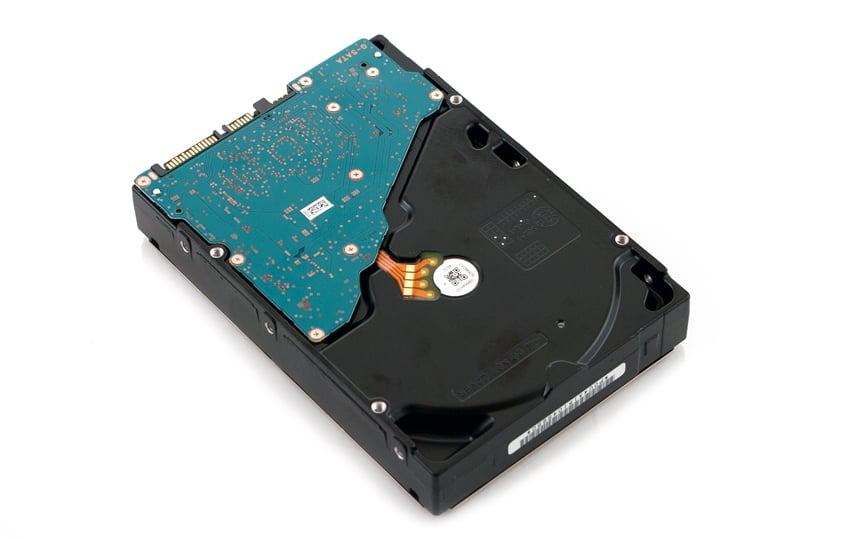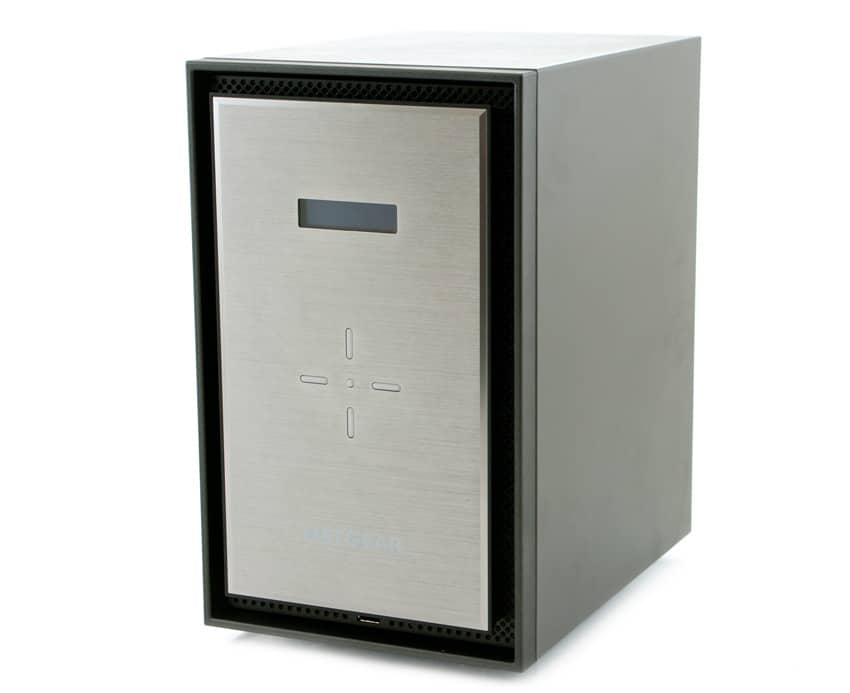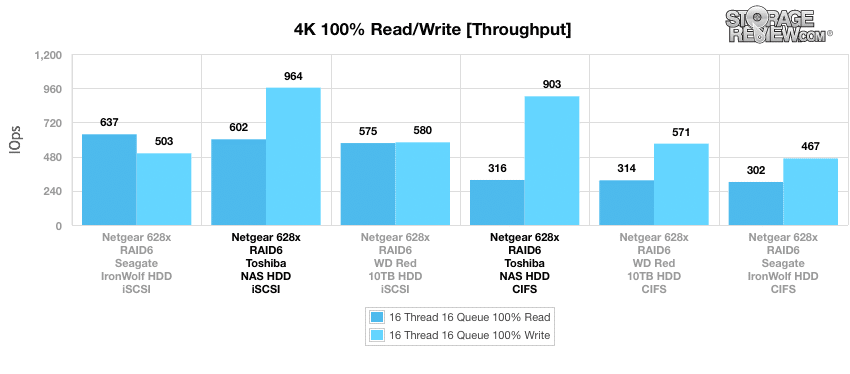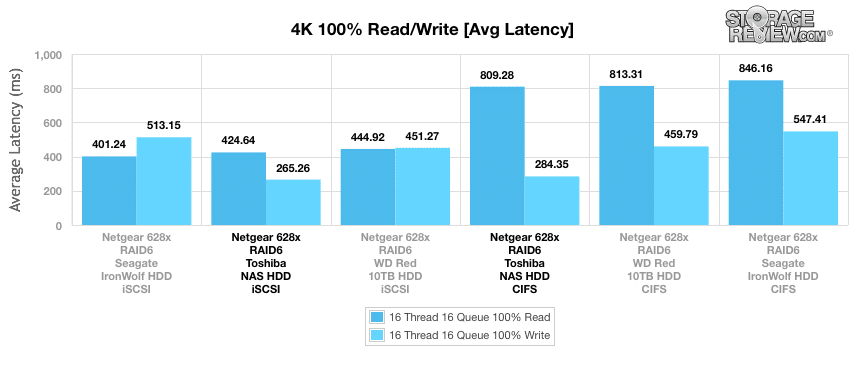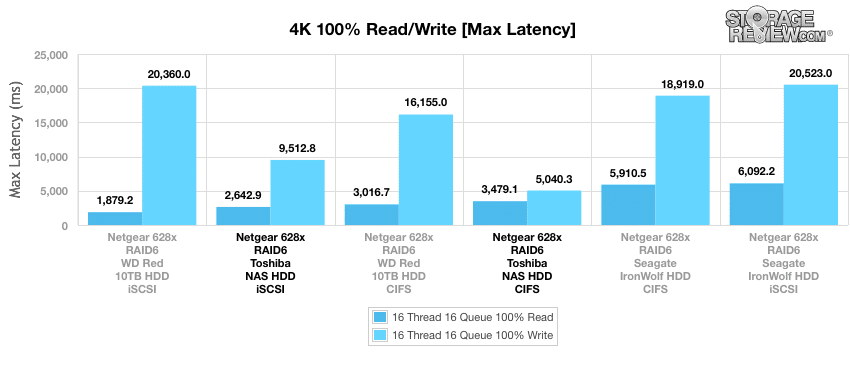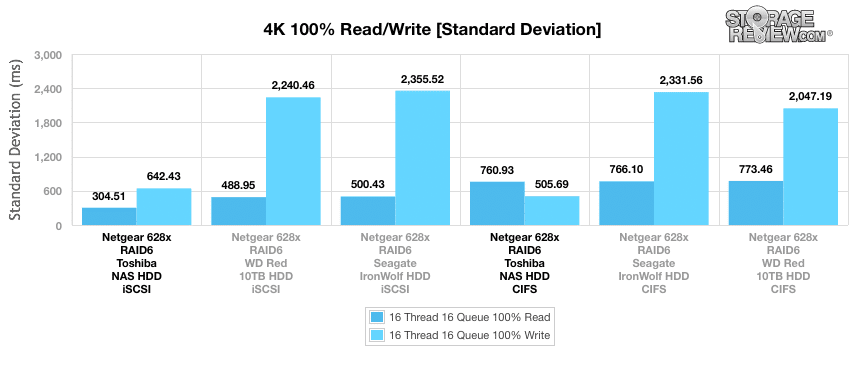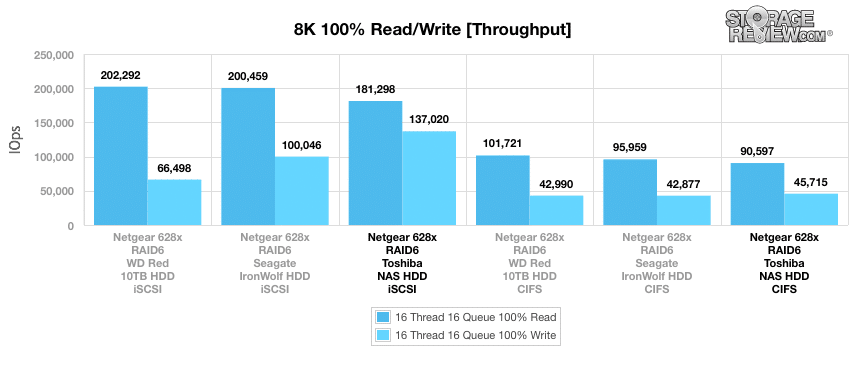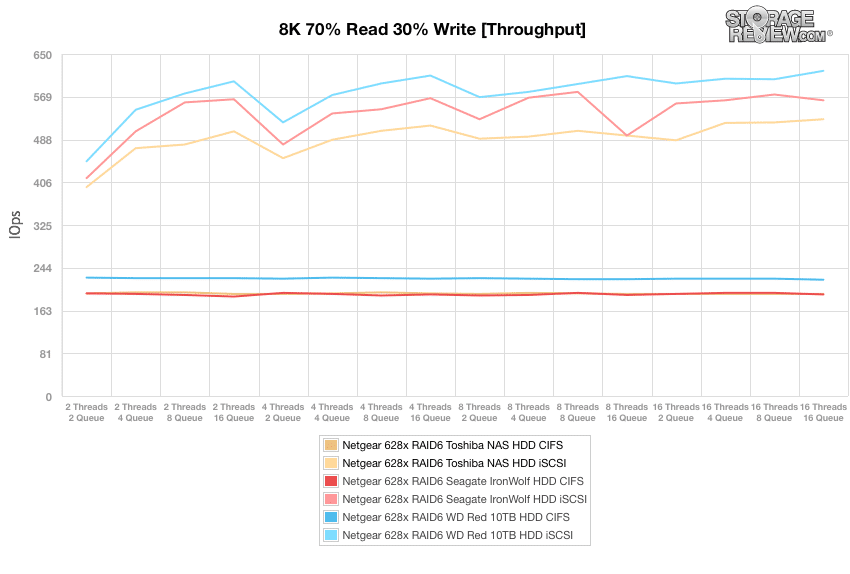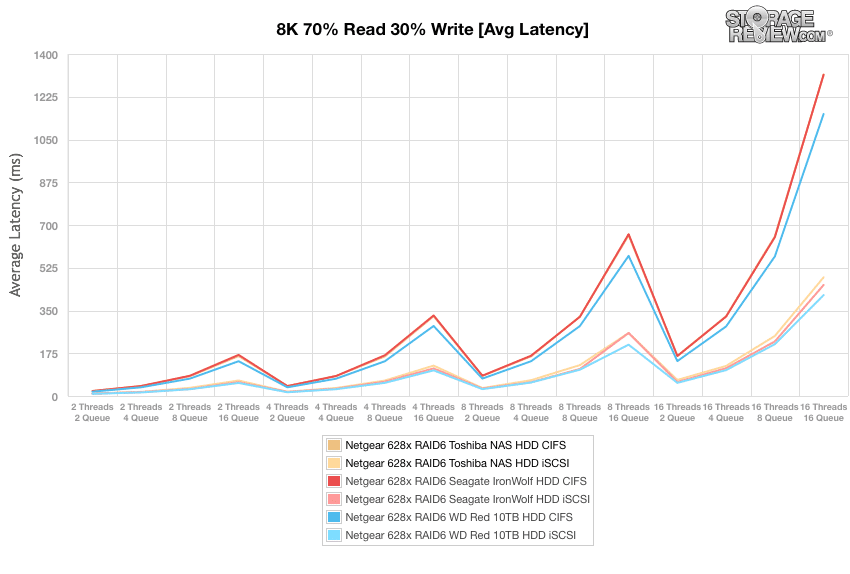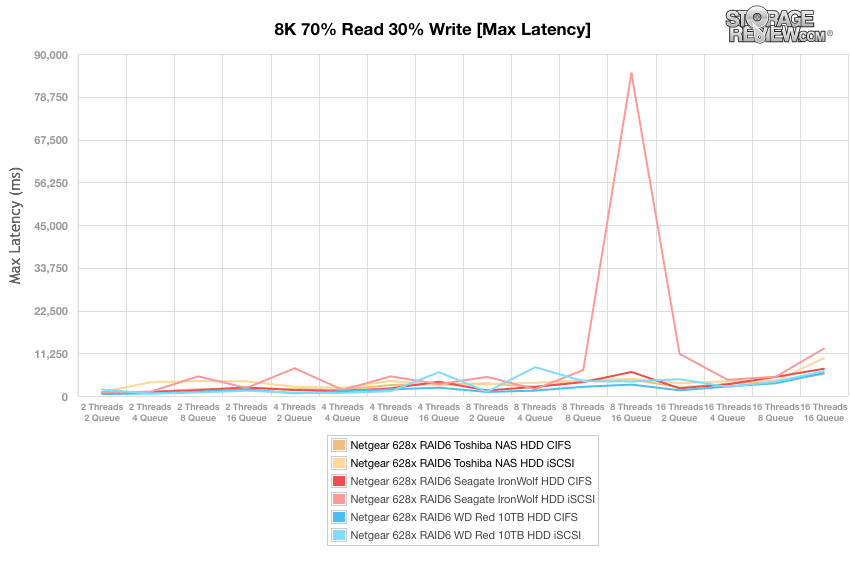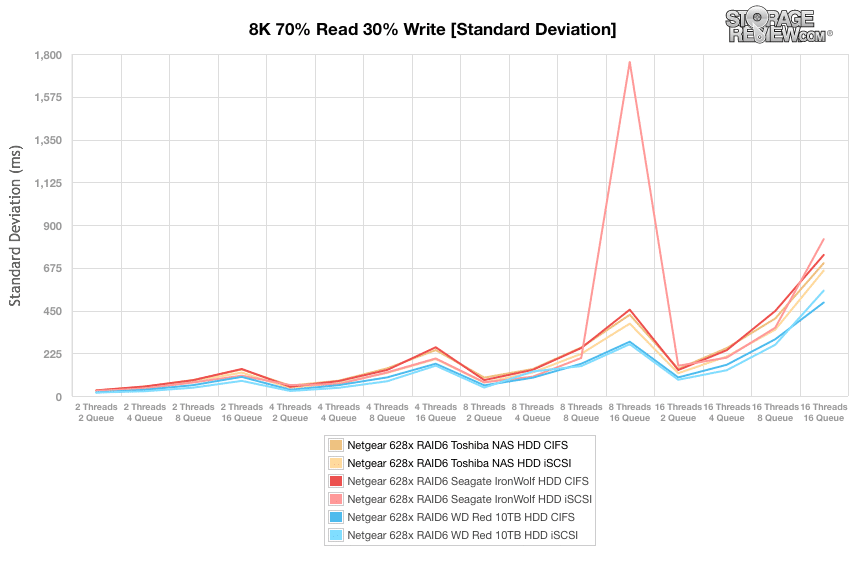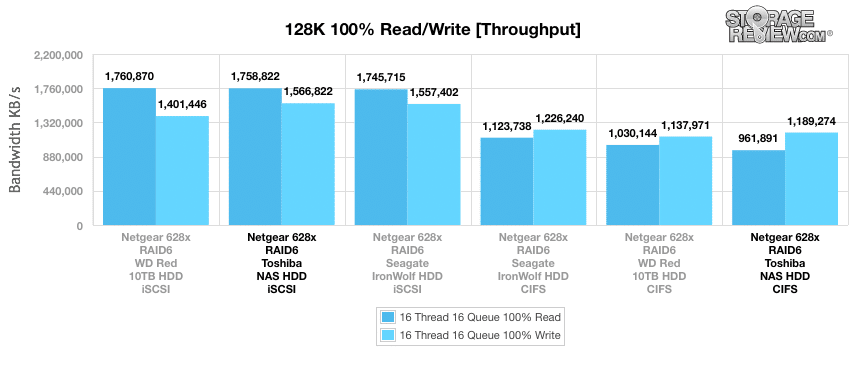
Toshiba continues to lend more of its focus to the NAS drive market with the release of its N300 line, 3.5-inch hard drives designed for consumer and business/office users looking for a 24×7 high-performing, high-capacity storage solution. Like all drives of this kind, the N300 is optimized for reliability and endurance (a maximum of 180TB/year workload factor), and supports multi-RAID configurations inside NAS devices with up to 8 bays. The N300 family features a 6Gbps SATA interface, comes in capacities of 4TB, 6TB and 8TB, spin at 7,200rpm, and features 1 million hours mean time between failures.
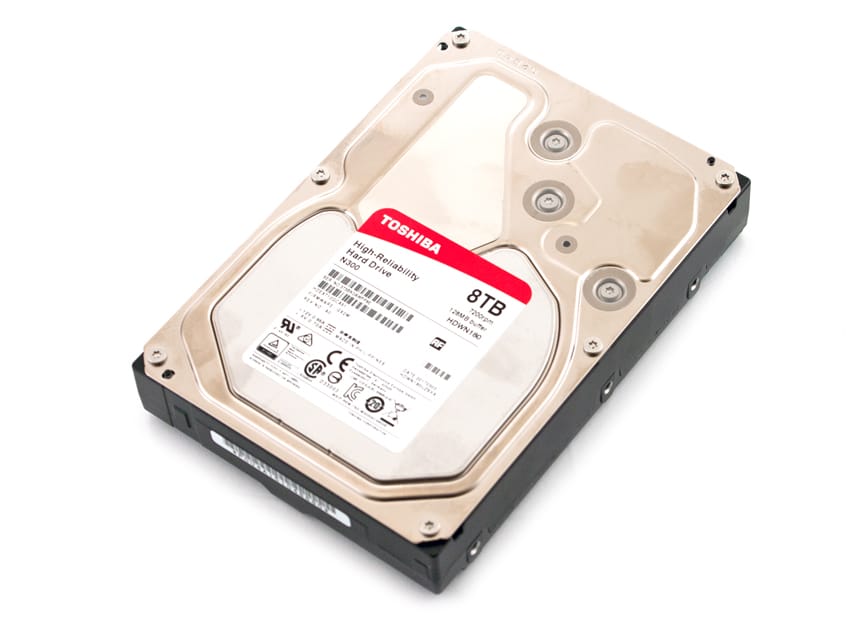
The N300 features Dynamic Cache Technology, which provides a noticeable boost in performance via a 128MB data buffer in multi-RAID NAS environments. Toshiba has also equipped their N300 drives with advanced control and sensing technology to dampen vibration wear and tear (e.g. ‘knock-on’ vibration). To achieve this, Toshiba has attached various sensors to detect the slightest shock while the built-in RV sensors compensate for rotational vibration.
Backed by a 3-year warranty, the N300 8TB can be picked up for $280.
Toshiba N300 Specifications
- Form factor: 3.5-inch
- Interface: SATA 6.0 Gbit/s
- Capacities: 4TB, 6TB, 8TB
- Rotational speed: 7200 rpm
- Buffer size: 128MB
- Dimensions: 147 (L) x 101.85 (W) x 26.1 (H) mm
- Weight: 770 g max.
- Box content: 3.5-inch internal hard drive – N300 High-Reliability HardDrive
- Supported drive bays: up to 8
- RAID support
- Workloads: 180TB/year
Enterprise Synthetic Workload Analysis
Our enterprise hard drive benchmark process preconditions each drive into steady-state with the same workload the device will be tested with under a heavy load of 16 threads with an outstanding queue of 16 per thread, and then tested in set intervals in multiple thread/queue depth profiles to show performance under light and heavy usage. Since hard drives reach their rated performance level very quickly, we only graph out the main sections of each test.
- 4k
- 100% Read or 100% Write
- 100% 4k
- 8k 70/30
- 70% Read, 30% Write
- 100% 8k
- 128k (Sequential)
- 100% Read or 100% Write
- 100% 128k
In the following section of this review, we will show the 8TB Toshiba N300 performance in both iSCSI and CIFS configurations inside a Netgear 628X (RAID6).
We will be including the following drives as comparables in the Netgear 628X configuration:
- Seagate IronWolf (10TB, 7,200RPM)
- WD Red (10TB, 5,400RPM)
Our throughput test measures the 4k random performance. Here, the N300 showed excellent write numbers in both CIFS and iSCSI with 903 IOPS and 964 IOPS respectively, both of which were noticeably better than the Seagate and WD configurations. Reads, however, were pretty much on par with the Seagate drives, posting 316 IOPS (CIFS) and 602 IOPS (iSCSI). The WD Red drives were a bit behind.
Results told a similar story when looking at average latency, as the N300 showed 284.35ms (CIFS) and 265.26ms (iSCSI) in writes, which were much better than the Seagate and WD NAS HDDs. In reads, the Toshiba edged out the Seagate and WD in CIFS connectivity.
The results 4k max latency showed read performance of 3,479.1ms and 2,642.9ms in our file-level storage and block-level storage, respectively. As you can see in the chart below, the WD Red had the best read latency with 1,879.2 in iSCSI.
In standard deviation, the Toshiba N300 posted 760.93ms (CIFS) and 304.51ms (iSCSI) in reads, while writes measured 505.685ms (CIFS) and 642.43ms (iSCSI).
The next benchmark tests the drives under 100% read/write activity, but this time at 8k sequential throughput. In CIFS, the Toshiba N300 posted 90,597 IOPS read and 45,715 write, while iSCSI showed a much better 181,298 IOPS and 137,020 IOPS, respectively. Though slower in writes, the WD Red and Seagate IronWolf posted better read performance: 202,292 IOPS and 200,459 IOPS (iSCSI), respectively.
Our next test shifts focus from a pure 8k sequential 100% read/write scenario to a mixed 8k 70/30 workload, where we will show how performance scales in a setting from 2T/2Q up to 16T/16Q. In CIFS, the Toshiba NAS drive began with 195 IOPS and peaked at 197 IOPS (4 threads 8 queue), while iSCSI connectivity showed a peak of 526 IOPS. The best performer here was the WD Red, peaking at 618 IOPS at the end of the test.
When looking at average latency, the Toshiba and Seagate HDDs showed near identical performance in each storage configuration (the WD drives also showed similar performance). In CIFS, the Toshiba posted an average latency range of 20.41ms to 1,315.62 while the Seagate drive showed 20.35ms to 1,315.45ms. In iSCSI, the Toshiba drive measured 10.04ms to 485.8ms and the Seagate 9.62ms through 454.64ms. The WD was the top performer again, posting 1,154.61ms and 413.11ms for CIFS and iSCSI, respectively.
Moving on to max latency, the Toshiba showed its best performance during our CIFS configuration, posting 828.03ms to 5,770.78ms.
The standard deviation latency results for our 8k 70/30 benchmark showed Toshiba’s best performance under iSCSI with a range of 27.76ms through 660.66ms. The top performer here was the WD Red in a CIFS configuration, which posted 492.02ms.
Our last test is the 128k benchmark, which is a large-block sequential test that shows the highest sequential transfer speed. The Toshiba N300 posted its best performance during the iSCSI configuration with 1.759GB/s read and 1.57GB/s write, which was slightly better than the Seagate IronWolf’s 1.75GB/s read and 1.56GB/s write and just trailing the WD Red (reads) with 1.760GB/s.
Conclusion
The Toshiba N300 is a welcomed addition to their portfolio. Recently, the company has been trying to play catch up with the NAS HDD market leaders–WD/Seagate–and with the release of the N300, it has certainly made a big step in the right direction. The NAS drive performs very well in our workload tests, handles up to 180TB per year in a 24/7 operation environment and has an impressive MTBF of 2.5 million hours. Though not as big as WD Red’s 10TB model, the 8TB capacity allows the N300 to leave a very small physical footprint per TB.
We tested the Toshiba N300’s inside the new NETGEAR 628X NAS with eight drives in both CIFS (file-level) and iSCSI (block-level) storage configurations. Overall, the Toshiba drive performed well. For example, the N300 showed excellent write performance in both CIFS and iSCSI (903 IOPS and 964 IOPS respectively), both of which were much better than the Seagate configurations. Reads showed 316 IOPS (CIFS) and 602 IOPS (iSCSI). In our 8k sequential throughput test, we measured the Toshiba NAS drives with 90,597 IOPS read and 45,715 write in CIFS, while iSCSI had a solid 181,298 IOPS read and 137,020 IOPS write.
In our pure 8k sequential 100% read/write scenario, the N300 showed its best performance configured in iSCSI, with a peak IOPS of 526. During the large-block sequential test, which shows the highest sequential transfer speed, the Toshiba N300 posted its best performance during the iSCSI configuration with 1.76GB/s read and 1.57GB/s write, edging out the Seagate IronWolf’s 1.75GB/s read and 1.56GB/s write and trailing the WD Red in reads, which posted a near identical 1.760GB/s.
Pros
- Solid performer
- Great reliability ratings
Cons
- Tops out at 8TB
Bottom Line
With its solid performance and focus on reliability, the Toshiba N300 will excel in NAS environments and other high-performance storage systems.
Sign up for the StorageReview newsletter

